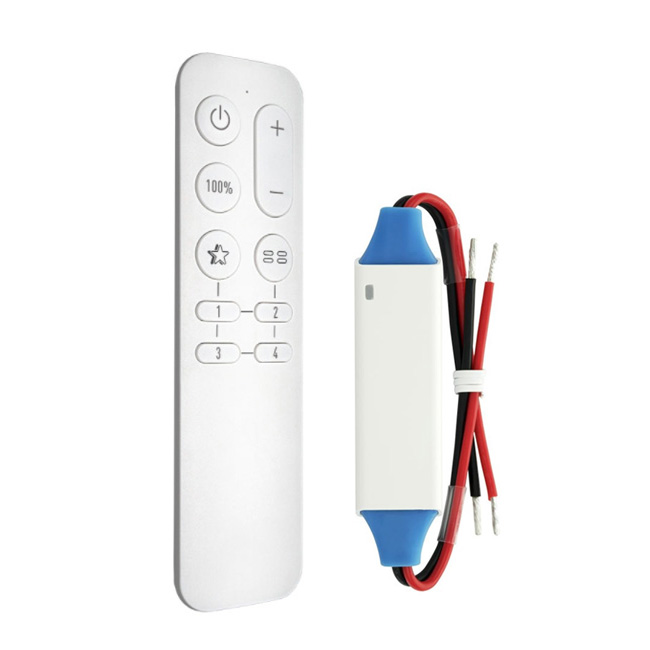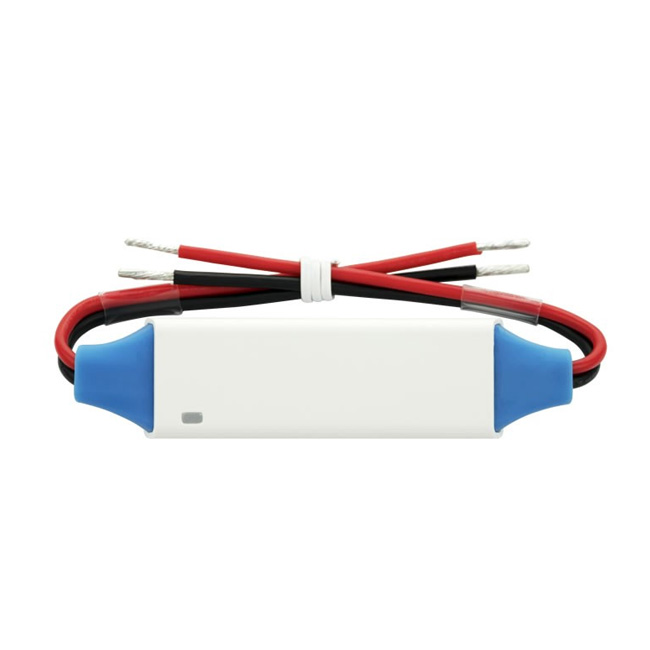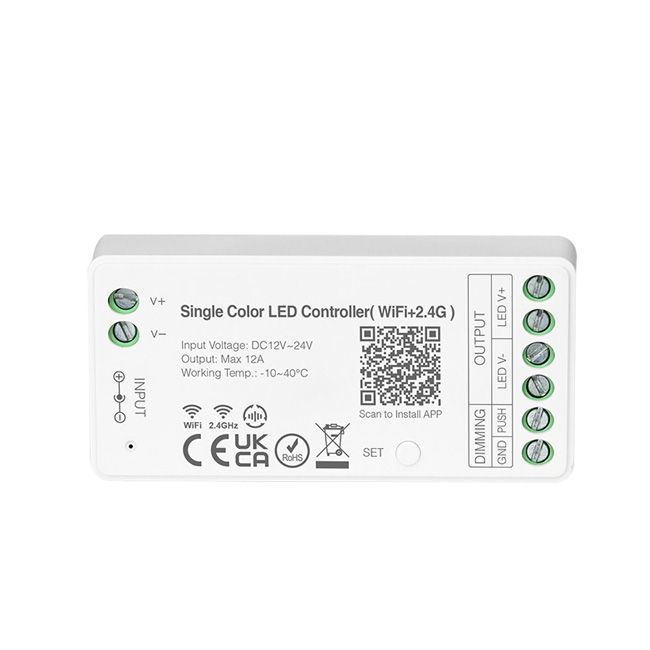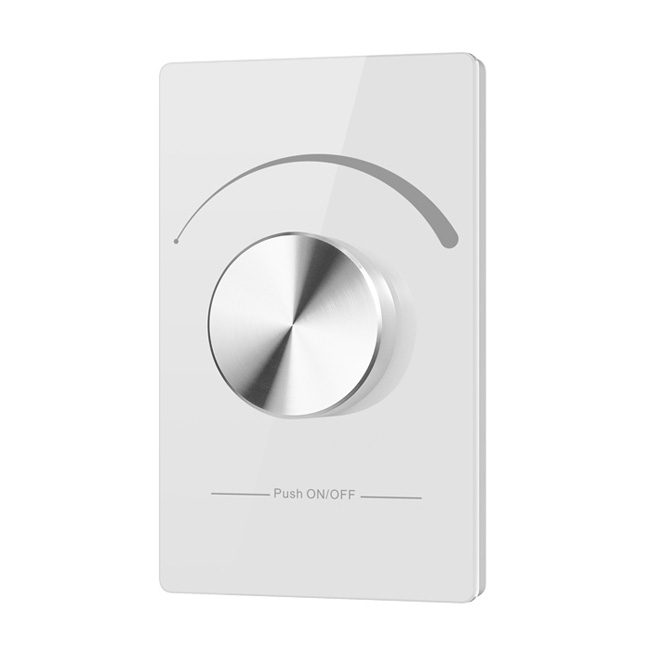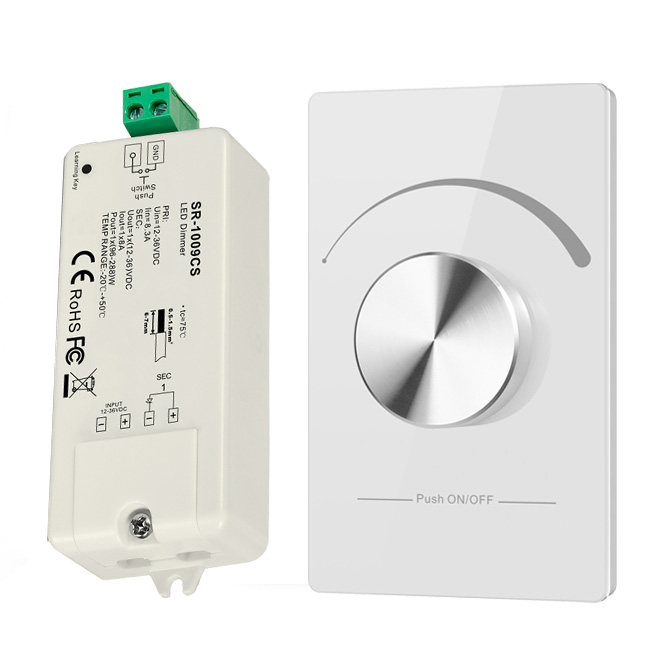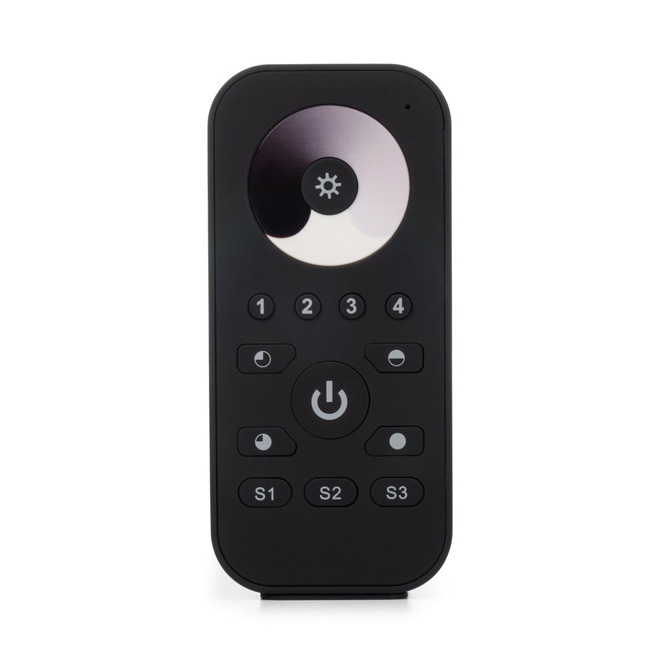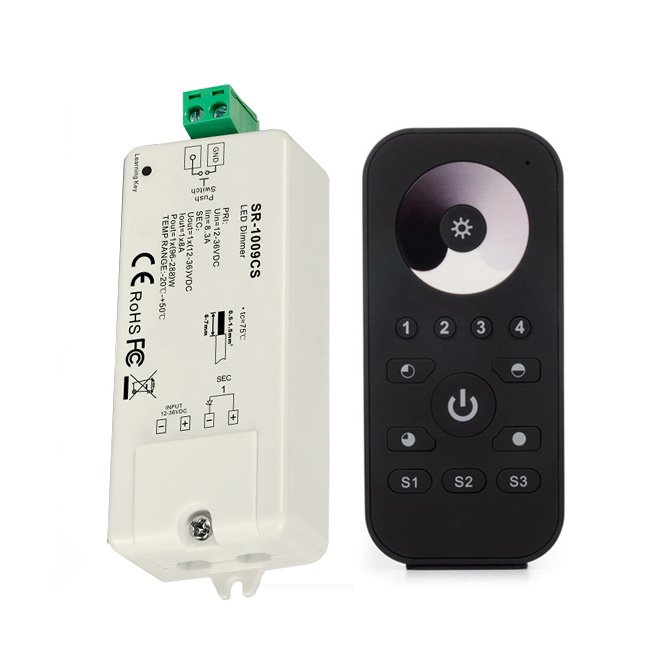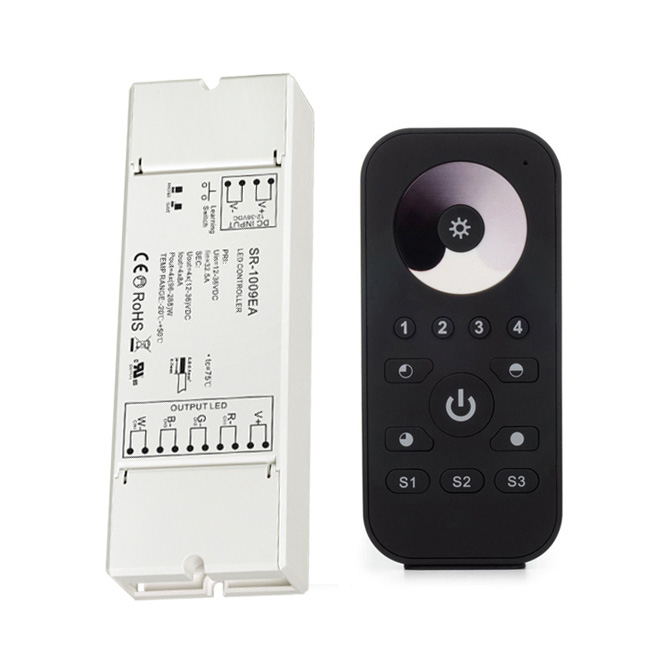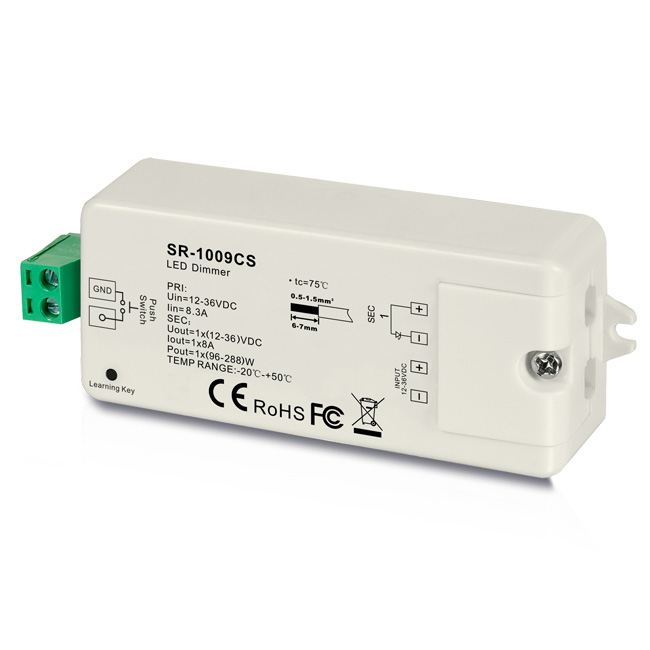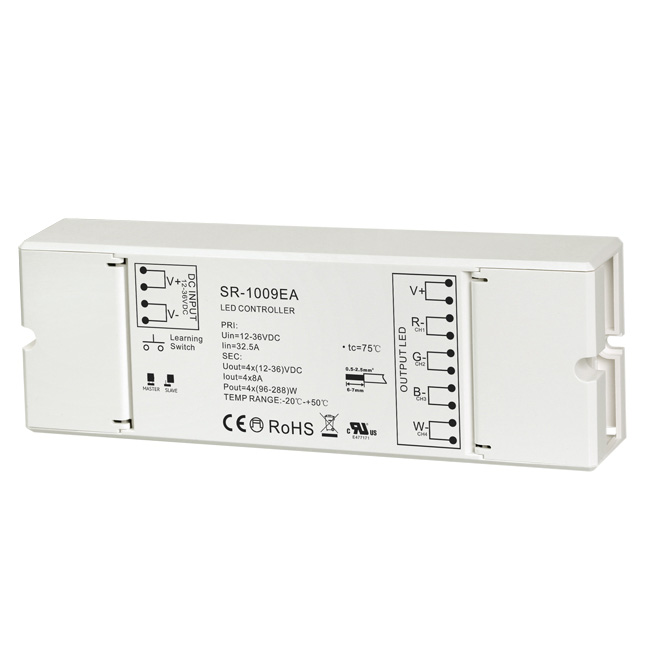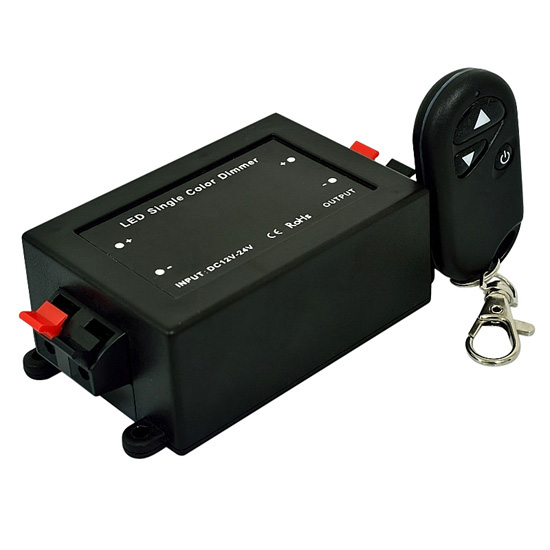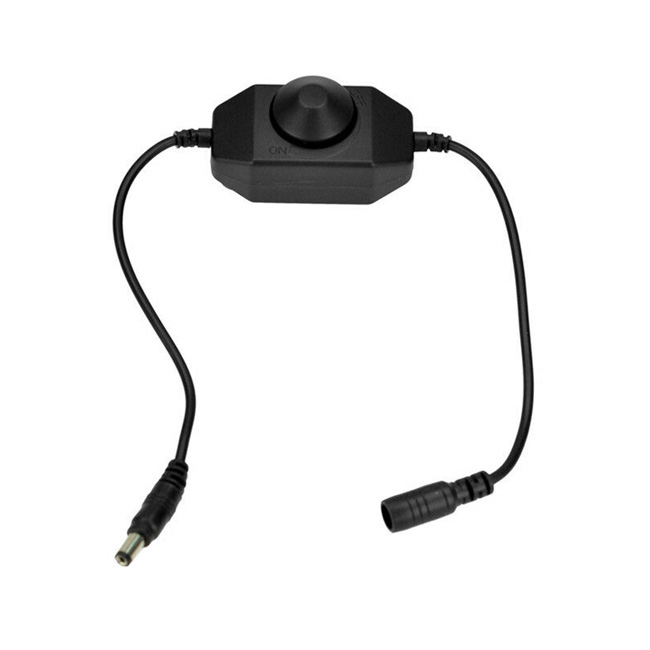 LED Dimmers for Dimmable LED Strip LightsLED dimmer, also called dimmer switch, is the control device that is mainly used to adjust the brightness level of LED lighting. LED strip light dimmer is a low voltage dimmer, which adjusts the brightness of the monochromatic dimmable LED strip lights. There are 12V LED dimmer switches for 12V dimmable LED strip lights, and 24V dimmers for 24V LED strips. Our LED strip dimmers are universal, 12V and 24V compatible. Dimmers are divided into wired LED dimmers and wireless dimmers based on the connection method. Wired dimmers are also called inline dimmers. Wireless dimmers include RF dimmers, Bluetooth, WiFi, and Zigbee LED dimmers.
Are all LED strip lights dimmable?The answer is yes, all our LED strip lights are fully dimmable. They can be dimmed by using a dimming controller. For monochrome LED strips, we install an LED dimmer between power supply and the light strips to adjust the brightness level. RGB, RGBW, and tunable white LED strips must have a controller to be able to function. The LED controllers, such as RGB LED controllers and tunable white LED controllers, have dimming capabilities by themselves. Applicable LED strip lightsLED strip dimmers are used to adjust the brightness of the monochrome light strip, which includes warm white, neutral white, cool white, red, green, blue and so on. The strip dimmer can achieve fully dimmable, 0% -100% dimming abilities. It also has the function of turning on and off the light strips. 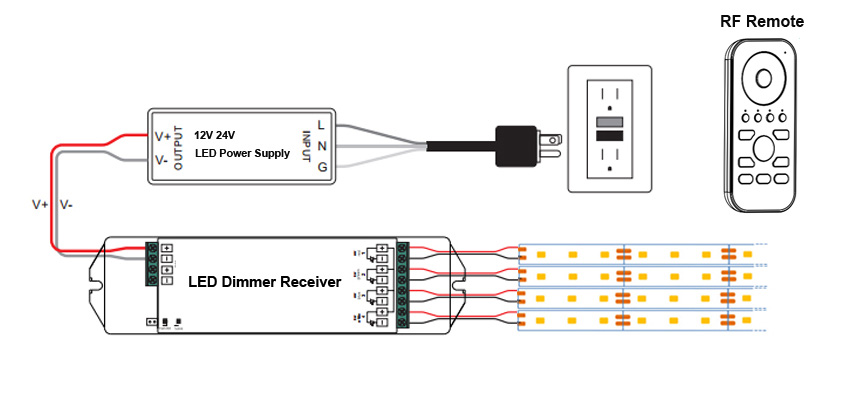 LED dimmer categories and featuresThere are many types of LED dimmers. They vary in terms of technology, installation, use convenience and cost. Here we introduce the common LED strip dimmers one by one to help you choose the right one. PWM LED dimmerPWM LED dimmers are the most commonly seen LED strip dimmers. PWM stands for Pulse Width Modulation. It refers to the technology on the output side of a dimmer that determines how the dimming function is realized. In addition to PWM, there are also DMX, TRIAC, 0-10V, and other dimmers for dimmable LED strip lights. Among them, PWM LED dimmers are the most popular LED strip dimmers. The TRIAC dimmer is used to dim on the primary side of a power supply and needs to be used in conjunction with a dimmable power source. The total cost is high. 0-10V dimmers have limitations in their use in light strips due to voltage regulation. 12V, 24V low voltage LED dimmerVoltage is one of the most important parameters of an LED strip dimmer. Because the voltage of the light strip is usually 12V or 24V, they use 12V and 24V LED dimmers, also called low voltage dimmers. Our LED dimmers are 12V and 24V compatible, which can be used for both 12V and 24V LED light strips. 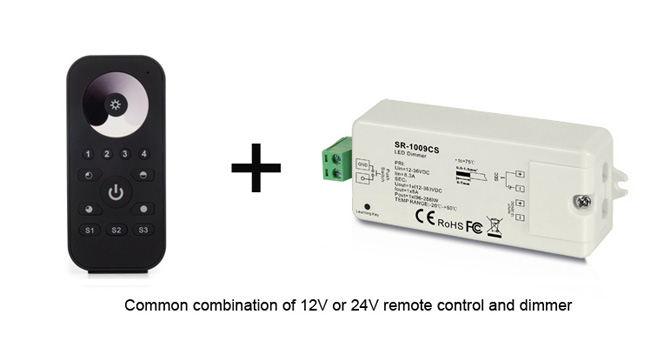 12 Volt dimmer switch for RVsSince 12Volt power supply system is typical for RVs, yachts, etc., it is necessary to select a 12V dimmer to install the 12V LED light strips for these vehicles. Inline LED dimmerInline LED dimmers, also called wired dimmers, are easy to install and use. They are simple in functions, and less expensive than other dimmers. For installation, the input side of the dimmer is connected to a 12V or 24V constant voltage power supply, and the output side is connected to a 12V or 24V LED light strip. RF wireless dimmerRF dimmers generally have two parts used in pairs, RF remote control and dimmer receiver. The control is realized through Radio Frequency wireless communication. The input end of the RF receiver is connected to a 12V or 24V constant voltage power supply, and the output end is connected to a 12V or 24V LED light strip. Then use the remote control to send signals to the receiver to adjust the brightness, or switch on and off the LED light strip. WiFi LED dimmerThrough the WiFi network, use smart phone to send control signals to the WiFi dimmer to implement control through application software installed on the smart phone. The input end of the WiFi receiver is connected to a 12V or 24V constant voltage power supply, and the output end is connected to LED light strips. Some of our 2.4G RF LED dimmers are WiFi compatible, so you only need to add a WiFi gateway, and convert the RF dimmer into a WiFi dimmer. WiFi dimmer is compatible with Amazon Alexa and Google Assistant to achieve intelligent control of the LED light strip. You can turn on, turn off, and adjust the brightness of your home's lights with your mobile phone without having to leave your bed, or on your way home, or in a vacation cabin when you suddenly realize that you forgot turning off your home lights.  Bluetooth dimmerBluetooth LED dimmers allow to use smart phones, via an application software, to dim LED light strips where there is no network available. The common example use is the 12V dimmer for RVs and yachts. Zigbee LED dimmerZigbee LED dimmer is not only to dim lights, but also able to use low power digital signals to create personal area network. Zigbee is a short-range, low-complexity, and two-way wireless communication technology. It is similar to Bluetooth, or an advanced version of the Bluetooth dimmer. Zigbee dimmers can create a mesh network that relays signals among the devices within the network. Compared to that Bluetooth network can join up to seven Bluetooth devices, Zigbee network can host many more Zigbee devices, up to 65,000. So Zigbee LED dimmer is very suitable for home automation. Its power consumption is low. A battery can be used for up to 3 years. Zigbee can be widely used for home, commerce and industrial applications. DMX, DALI controllersDMX (Digital Multiplex) and DALI (Digital Addressable Lighting Interface) controllers can be used as digital dimmers to dim LED strip lights. Digital multiplex can control up to 512 channels. DALI also controls larger lighting systems. Due to the cost and size, these two types digital controllers were originally only found in medium and large projects for commercial installations. With the development of science and technology, the cost has dropped sharply, and the size has become much smaller, making them more often used for home installation.
Recommended Reading: Multi-zone LED dimmerThere are single zone and multi-zone LED strip dimmers, based on the ability to control the number of strip light groups. Certain RF dimmers have multi zone function built in. WiFi dimmers can easily create and control multiple zones through application software. Multi-zone dimmers are mainly used to realize the centralized or synchronous control or independent control of multi-zone LED strip lights. For example, using a multi-zone LED dimmer, it is easy to turn on and off many zones of LED strips at the same time, or dim to the same brightness level. You can also turn on the strip lights for one area and turn off for another. Dim the first zone of LED strip lighting to the 50% brightness level, the second zone to 75%, and the third zone to 100%. Outdoor light dimmerOutdoor environment is harsher than indoor environment for LED devices. For outdoor LED dimmer applications, we need pay attention to the waterproof, dustproof and anti-corrosion abilities. The IP68 waterproof LED dimmers are specially designed for lighting control in outdoor, marine and other harsh environments. For example, outdoor light dimmers are often used for LED strip light installation for chemical plants, gas stations, seaside homes, stores, and buildings. They are also suitable for ships and yachts that often sail in wet and salty areas. LED Rotary dimmer and Touch DimmerAccording to the signal entry methods, there are the traditional rotary knob dimmers, touch panel dimmers, as well as key or button dimmers. The different signal entry methods can determine the dimmer's functions. The rotary knob dimmers typically have less function that touch dimmers or button dimmers. Wall mount and independent remote dimmerIndependent remote control dimmer has the advantage that it can be freely moved, and the disadvantage is that it could not be found at the moment you need or even lost. The advantages of wall mounted dimmers are that they will not be lost. The disadvantage is that you need to get up to the wall to operate. Wattage of LED dimmerIn addition to voltage, the wattage is another important parameter for LED strip dimmers. It determines how many light strips the dimmer can drive. The wattage of the dimmer can be calculated by this formula: Wattage = Output Voltage x Output Current For example, if a 12V LED strip dimmer has a maximum 8 Amps output current, then the power of this dimmer is 12V x 8A = 96 Watts.
Recommended Reading: |


